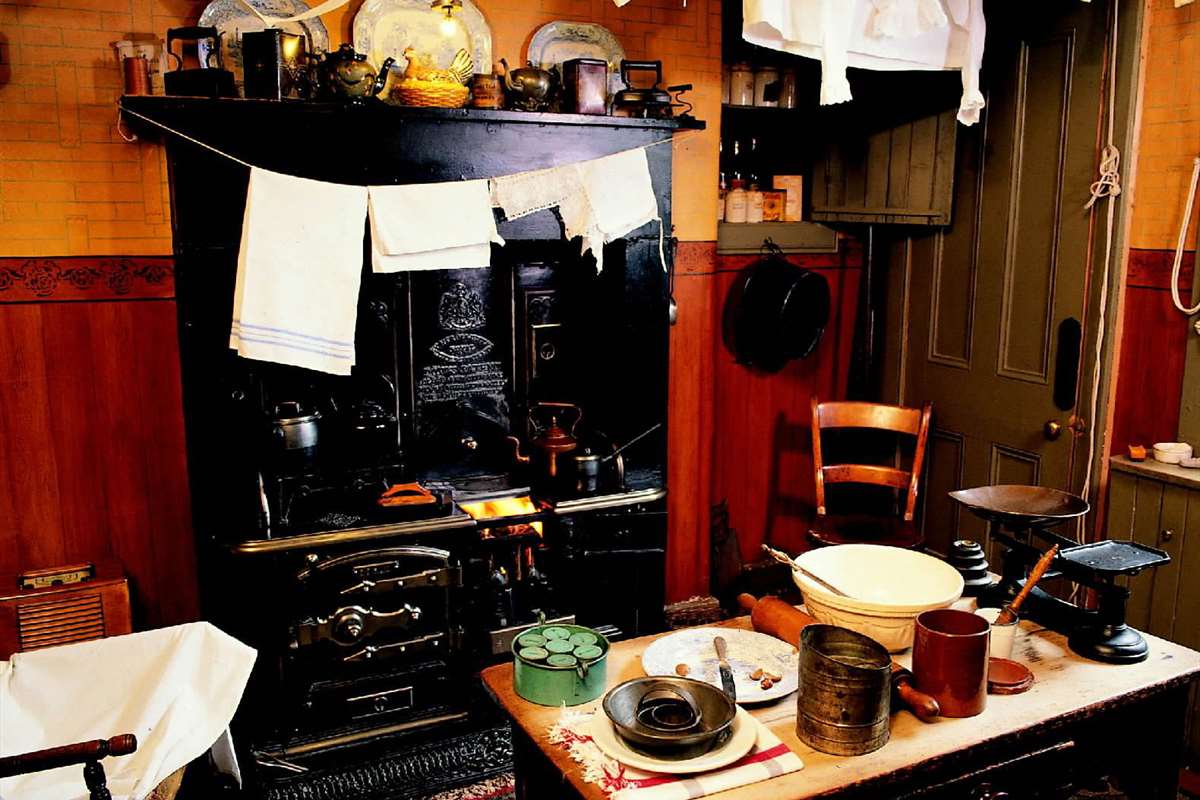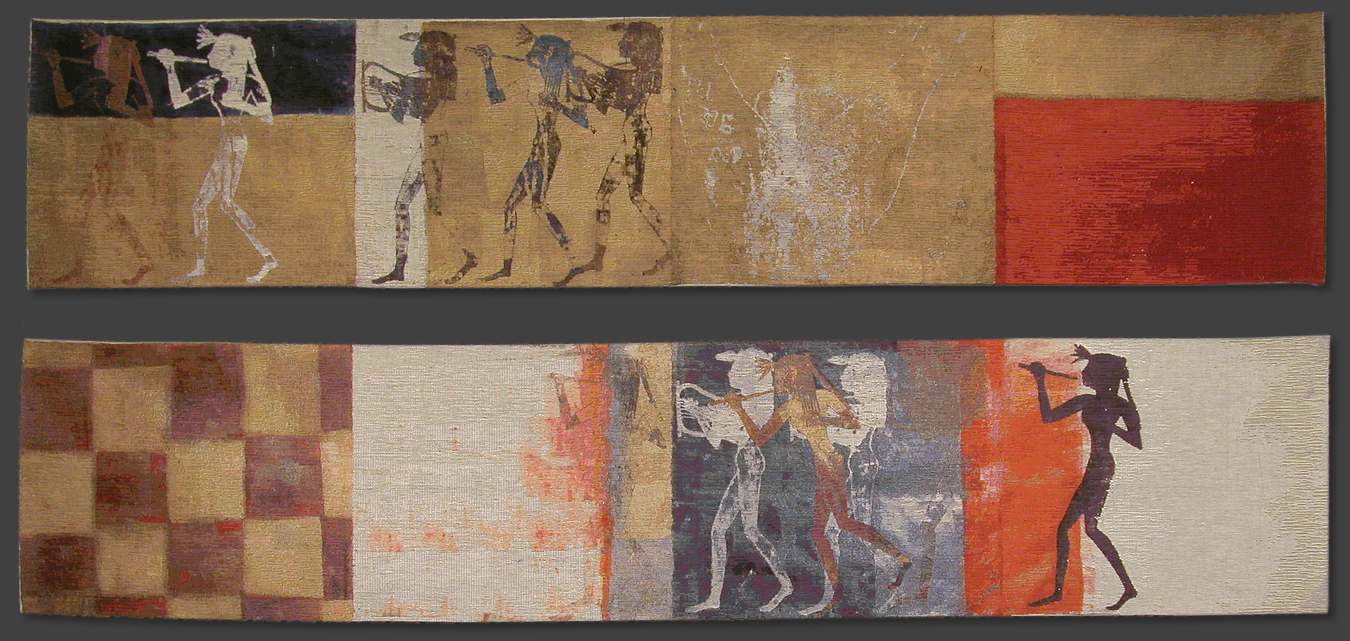While on holiday in Scotland, I went to a selection of exhibitions/museums/National Trust venues.
House for an Art Lover, Glasgow This is a house, built in 1990, from plans designed by Charles Rennie Mackintosh in c 1906 for a competition. It meant he was unfettered by a client's wishes and designed to his wildest flights of fancy. It was an amazing house. At the start of the 19th century, most architects were focussed on Greek, Roman or Gothic Paris, and sex was taboo. He was working with modern materials, Japonism, imagery and symbolism. His symbolism was about growth, rebirth and the feminine form, moving radically away from Victorian woman repression. Women were starting to become political although they had limited opportunity in public. CRM was fusing meaning and reality.
The modern builders of the House for an Art Lover have worked in detail to create interiors from the plans - but they are interpretations not rigid copies. As usual they are ambiguous designs which can be read as the awakening of the maiden, and to my mind look like they were designed by a woman desperate for a baby (Margaret MacDonald).
I particularly liked the drawing room - designed for ladies to withdraw to after dinner, which was circular, white, and meant to be feminine. It felt wonderful.
 |
| Ladies drawing room, House for an Art Lover |
Hill House, Helensburgh I have been here several times, but each time, the house has evolved slightly, showing more interpretation of the interior. This time I noted the variation in colour of the column of glass lights in the door leading from the family areas of the house, the hall, into the servants area which led to the kitchen. This leaded light was were mostly purple, with one green panel, which subtly denoted it led from family to servant area. Very subtle, but a clear indicator once you understood the code.
Another architectural detail was the difference between rooms designed for the 5 children of the family and their parents. The children's rooms faced east to gain the early morning light, symbolic of early life, and the parents rooms faced west for the evening light, indicating the waning of life. Great symbolism.
When in the bedroom, there was all sorts of sexual symbolism, once you knew the symbols. On the settee, there were stylised thistle seed heads - indicative of fertility.
 |
Thistle seed heads scarcely visible behind the white table
in the Hill House main bedroom |
"Reason informed by emotion - expressed in beauty - elevated by earnestness - lightened by humour - that is the ideal that should guide all artists" CRM.
Tenement House, Buccleugh Street, Glasgow This was a turn of the century tenement house, which was lived in by Miss Agnes Toward (1886-1975) from 1902 to 1975. It was a middle class tenement, 1st floor. She worked for a shipping agent, office work - not manual work, and she and her mother were members of the Church of Scotland. She moved there with her mother, and continued to live there alone after her mother's death. Miss Toward hoarded trivia so many postcards, theatre programmes and other ephemera indicating her interests were present when the flat was vacated. It was a rented property and was furnished with her grandparents furniture, so she had few outgoings, which presumably meant she was able to travel and enjoy a social life. She worked until the age of 73 (for social contact?) as a spinster, with no family. She lived in the tenement until the age of 80, then spent a further 10 years in hospital (dementia?) until her death. She kept the flat and paid the rent to the end, so it was a detailed, undisturbed, archive of her life. The tenement was set up as it would have been in her lifetime, including the range, and box bed, in the kitchen, deal table and jars of jam she had made!
 |
| Kitchen of Tenement House |
Hunterian Art Gallery, Glasgow This has the Mackintosh House which was the last Glasgow residence of Charles Rennie Mackintosh and Margaret Macdonald before they moved away from Scotland. I drew one of Margaret Macdonald's banners for the Scottish section of the international Exhibition of Modern Decorative Art in Turin, 1902, 15" x 20'. I also looked at her metalwork fire screen panel 1899. My opinion is that this shows her desire for a child. They married in 1900, when she was in her mid 30s - late marriage for the era. They never had children. They had one nephew, Sylvan, who inherited their estate and who gifted it to Glasgow University in 1947 when he emigrated to South Africa.
 |
| Margaret Macdonald, 1899, metalwork firescreen |
Additonally I looked at Margaret Macdonald's mirror surround, Honesty. I am thinking about personal values as part of my inspiration, and honesty is something I identify with, and feel strongly about. I was thinking about how to represent it as a concept in my stitch work - and the plant as used by MM is inspirational!
Charles Rennie Mackintosh was engaged to his employer's sister, Jessie Keppie, prior to settling down with Margaret Macdonald. Was this mirror made around the time of the change of relationship? Perhaps I am reading too much into it, but it would typical of their symbolism that a plant in a design should be used to make a significant comment!
Glasgow School of Art Walking Tour
I have done this tour several times since the fire at the GSA meant the tour could not be inside the building, and it changes every time - yippee!
"The Art School taught me to look at the world and see that there is art in the mundane and obvious, as well as in the exotic" Peter Capaldi (b1958 graduated GSA 1980)
Willow Tea Rooms is being refurbished as CRM heritage centre for 2018 in the name of Miss Catherine Cranston's Tearoom. (Willow Tea Rooms is a copyrighted name and is being kept by the current owner. I think the new branding promotes a Victorian woman as an innovative business woman and fits with 21st century agenda to celebrate the achievements of diverse people).
Glasgow buildings can be approximately dated from the materials. Blonde sandstone was 19th C and red sandstone was 20th C (when the blonde sandstone quarry ran out!). GSA designed for 14,000 GBP : the east wing alone ran to 42,000 GBP partly due to blonde sandstone being used when it was in short supply 1906-14. West wing done 1914-16, also in blonde sandstone.
Lots of red sandstone buildings by other architects using greek, roman and continental design features carved into the facade - none of which was my taste.
Mackintosh style became increasingly simplified. But increasingly ambiguous. CRM was never a member of the Glasgow Art Club (men only), but associated with the Glasgow Society of Lady Artists. He redesigned their premises ( which backed on to the GAC) and even put an oval design over their front door! Symbolic of femaleness or what?! He associated the oval with the feminine.
 |
| Doorway to Society of Lady Artists |
Much of CRM design is ambiguous. His round window design for a door at the Glasgow School of Art, of grass and seed head, can equally be read as a pregnant stomach with a swollen bosom. I like it whichever way it is read. It could be male, female, or about nature, growth, and the cycle of life. I can't find an online image of it, although I have a postcard from GA.
Facing the World, Self Portraits Rembrandt to Ai WeiWei. Scottish National Portrait Gallery, Edinburgh
Great exhibition. Key ones I liked:
James Nasmyth - back of hand as portrait.
Angela Palmer - brain of the artist. 16 sheets of glass engraved with brain images from scan.
Frits Klemm had reduced his self portrait to a line for his head and shoulders, surmounted on a heavily textured painters table.
Samuel Van Hoogstraten had painted a serious of object associated wit thin.
Analysis shows men and women represent themselves fairly respectably and play on their positive attributes in a self portrait. However, when men include women in self/group portraits the woman is often portrayed unflatteringly - prostitute, sexualised, or less in some way to the men/man.
The Weavers Cottage This was a small NT property, that demonstrated what a traditional weaver's cottage was like. I had an interesting conversation with the lady hand weaving on a 200 year old loom. She was obviously a bit of a feminist (yippee!) as she had made sure her name was associated with the tartan fabrics she made to commission for various NT purposes. The building also had a chest of drawers full of old tartan samples … including ours!
 |
| Hand woven tartan samples |
 |
| Our MacTaggart tartan |












